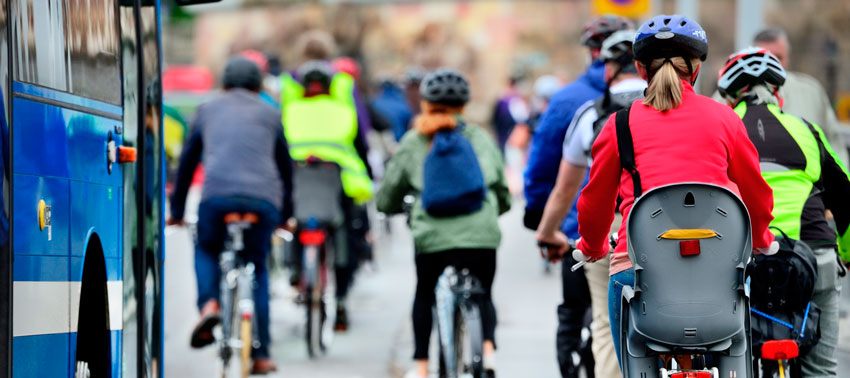
Health and active mobility
Good for health
Active mobility, in the form of walking and cycling as a means of transport, is a highly promising approach to integrate physical activity into individuals’ daily lives. In contrast to formal sport and exercise, active mobility requires less time and motivation and has the potential to reach out to a large segment of the population who are physically inactive. Thirty minutes of daily cycling or walking is associated with reduced mortality in the range of 30 percent.
Good for the environment and for liveable cities
Active mobility is an environmentally sustainable form of travel and it is a powerful approach to decrease noise pollution and the emissions of greenhouse gases. Active mobility does not pose any major road safety threats to other road users and it contributes to a more calm and inclusive urban environment. It provides individuals with low cost mobility over short to medium distances in cities and, in combination with public transport, also over longer distances.
Increasing active mobility in cities will help to solve both environmental and health challenges while creating a more liveable, vibrant and attractive city with less congestion.
Contact
Some of our relevant project experience
PASTA – Physical Activity through Sustainable Transport Approaches (2013-17)
This four year European research project, co-funded under the Seventh Framework Program of the European Commission, focuses on the systematic promotion and facilitation of active mobility (i.e. walking and cycling, including the combination with public transport use) as an innovative approach to increase physical activity in daily life. A longitudinal study will be conducted on a total sample of 14 000 adults from seven European cities, Örebro (in Sweden) being one of them. The project developed a comprehensive tool to calculate cost/benefit-ratios for investments in supportive infrastructure for active mobility. In addition, a compendium of good practices that can support practitioners and policy makers in their work to promote active mobility was produced.
Trivector Traffic is the sole representative of the private sector in the project. You can read more on the PASTA website. For further information, please contact Lena Smidfelt Rosqvist, +46 10-456 56 10.
BYPAD+
The European projects BYPAD and BYPAD+ created a tool for municipalities to audit their bicycle policies and infrastructure, and help to improve them. Trivector was a partner in BYPAD+, where the tool was tested in 30 cities. Trivector have made more than 10 Bypad-audits in Swedish cities over the years. For more information please visit the BYPAD website, or Karin Neergaard, +46 10-456 56 16.
Methods & measurements for monitoring pedestrian and cycle traffic
This Swedish Transport Administration funded project, conducted by VTI, the Swedish National Road and Transport Research Institute, together with Trivector Traffic and Vectura, aimed to create a harmonised method for monitoring pedestrian and cycle traffic, which enables comparisons to be made over years and between towns, regions or the country as a whole. This work is presented in VTI rapport 686 and VTI rapport 743 (written in Swedish with an English summary).

